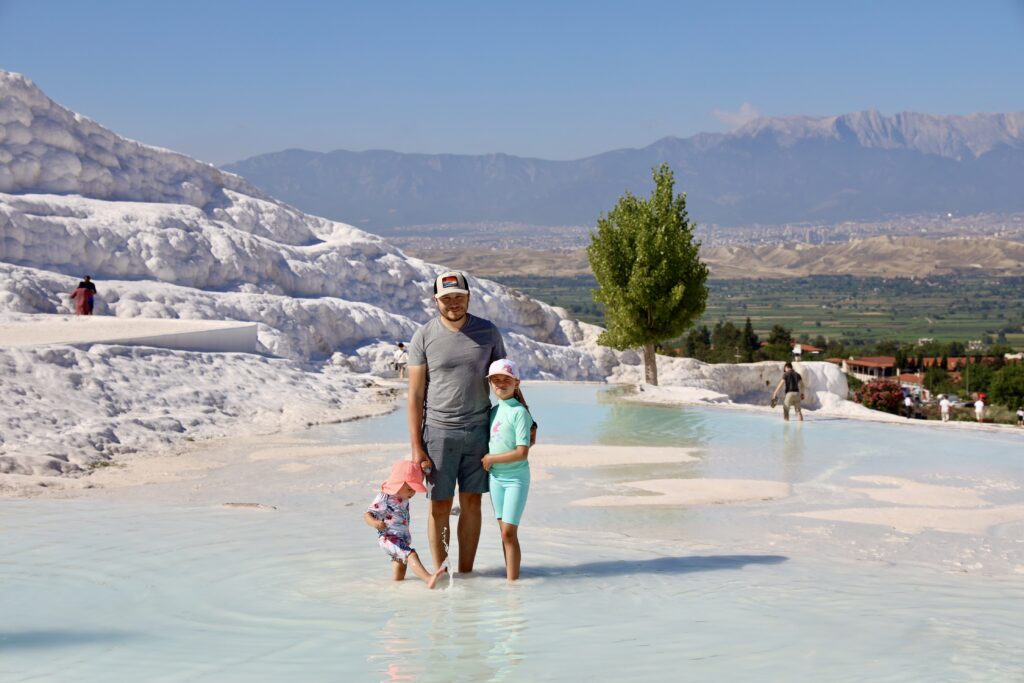
This summer, we spent a few unforgettable weeks exploring Türkiye with our kids, from wandering the streets of Istanbul to relaxing on the Mediterranean coast. One of the most memorable experiences was visiting Pamukkale, Türkiye, with kids, a surreal landscape of white travertine terraces and warm thermal pools that felt like something out of a dream.
We’ve already shared all the details of our three-day road trip from Antalya to Istanbul (read it here), including how we chose fun and unique stops along the way. But Pamukkale stood out as a clear favorite — not only for us but also as the place our friends ask about the most.
If you’re planning a family trip to Türkiye, here’s everything you need to know about visiting Pamukkale with kids, why it’s worth a stop, what to expect, and how to make the most of it.
Affiliate Disclosure: Some of the links in this post may be affiliate links, which means I may earn a commission if you click through and make a purchase, at no additional cost to you. I only recommend products and services I use and love. As always, all opinions are my own.
What is Pamukkale, Türkiye?
Despite some popular beliefs, Pamukkale is not a salt formations site (although it sure does look like it). In fact, it’s a natural site composed out of a carbonated mineral – travertine, which gets deposited by the flowing thermal waters!
Thermal waters flow down the hill over travertine terrace formations, leaving dozens of thermal pools you can walk on or swim in.

Pamukkale means a “cotton castle” in Turkish. The limestone thermal pools sure look bright white with “fluffy” deposits.

With the ancient spa city of Hierapolis on the top of the hill, this area is a very popular tourist destination and has been declared a UNESCO World Heritage Site.
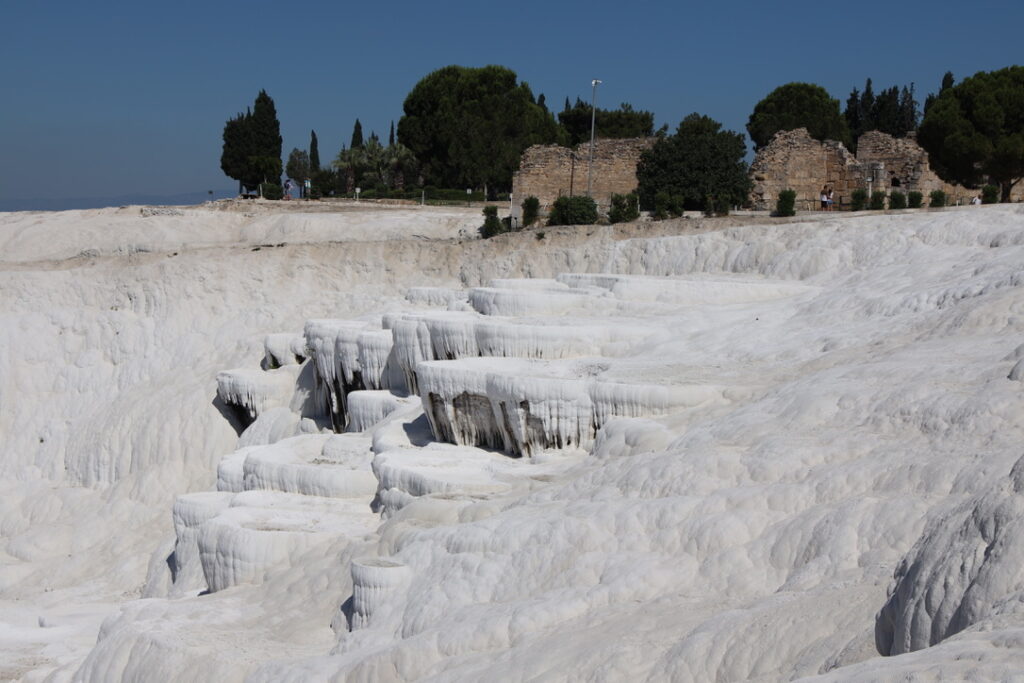
There is actually a sad story about how this thousands-year-old natural site was nearly destroyed in the 20th century and how it was finally restored.
People thought it was a splendid idea to build hotels over the ancient city of Hierapolis and a road over the thermal pool formations from the valley 😰. Until finally in 1988 Pamukkale along with the Hierapolis was declared a UNESCO World Heritage Site, which resulted in the demolition of the hotels and the road. Some of the areas from the removed road had to be replaced by artificial pools 🫢.
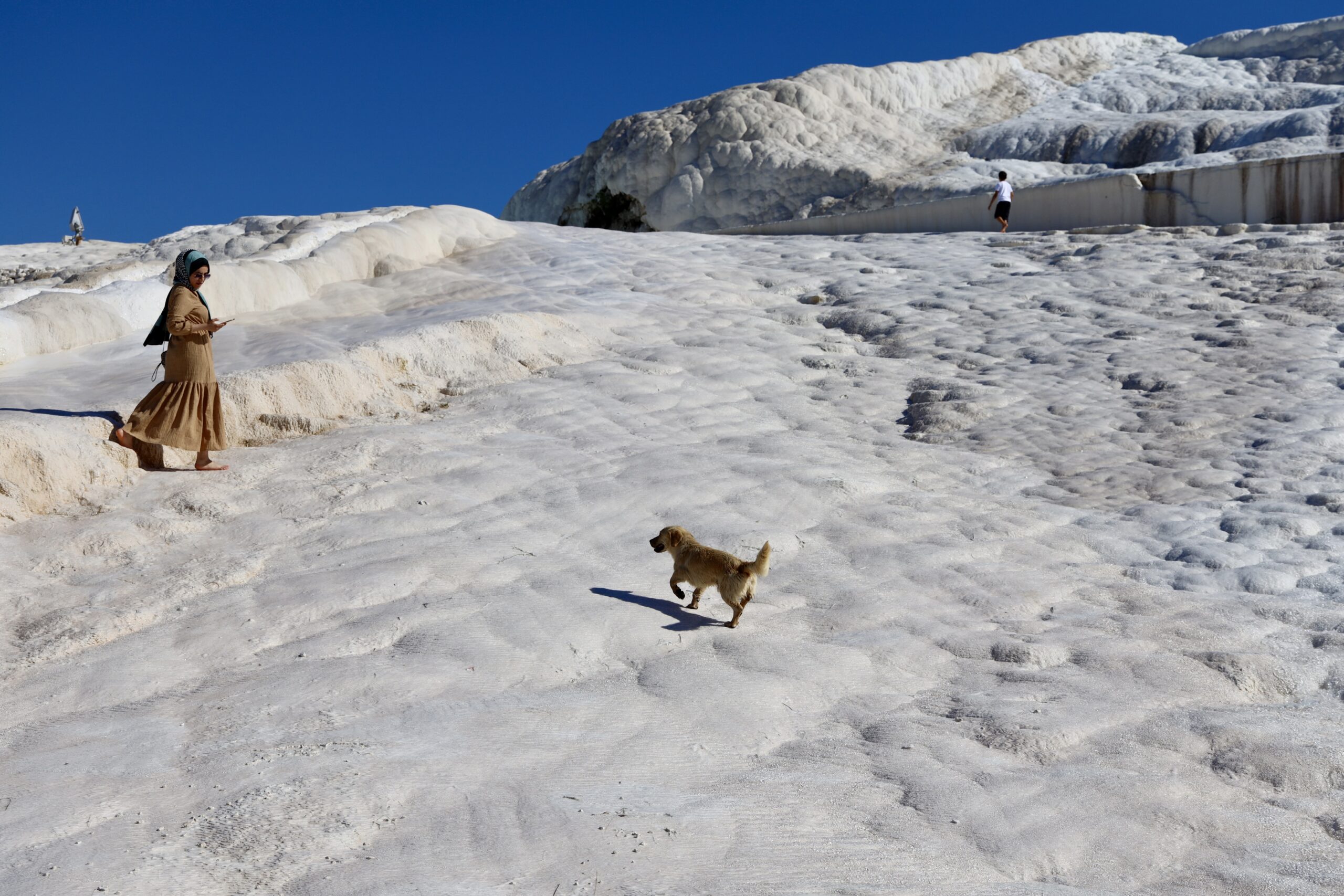
Where is Pamukkale, Türkiye
Pamukkale is located in Southwest Turkey, in the Denizli Province.
It is around 150 mi (240 km) from Antalya, 136 mi (220 km) from Izmir, and 350 mi (570 km) from Istanbul.

Operating hours and admission to Pamukkale, Türkiye
The site is open from 8 am to 8 pm during summer and 8 am to 6 pm during winter.
The cost of admission which includes the thermal pools and the visit to the ancient city of Hierapolis is 150 TRY (around $8.50) per person.
Kids under 8 are admitted free of charge.
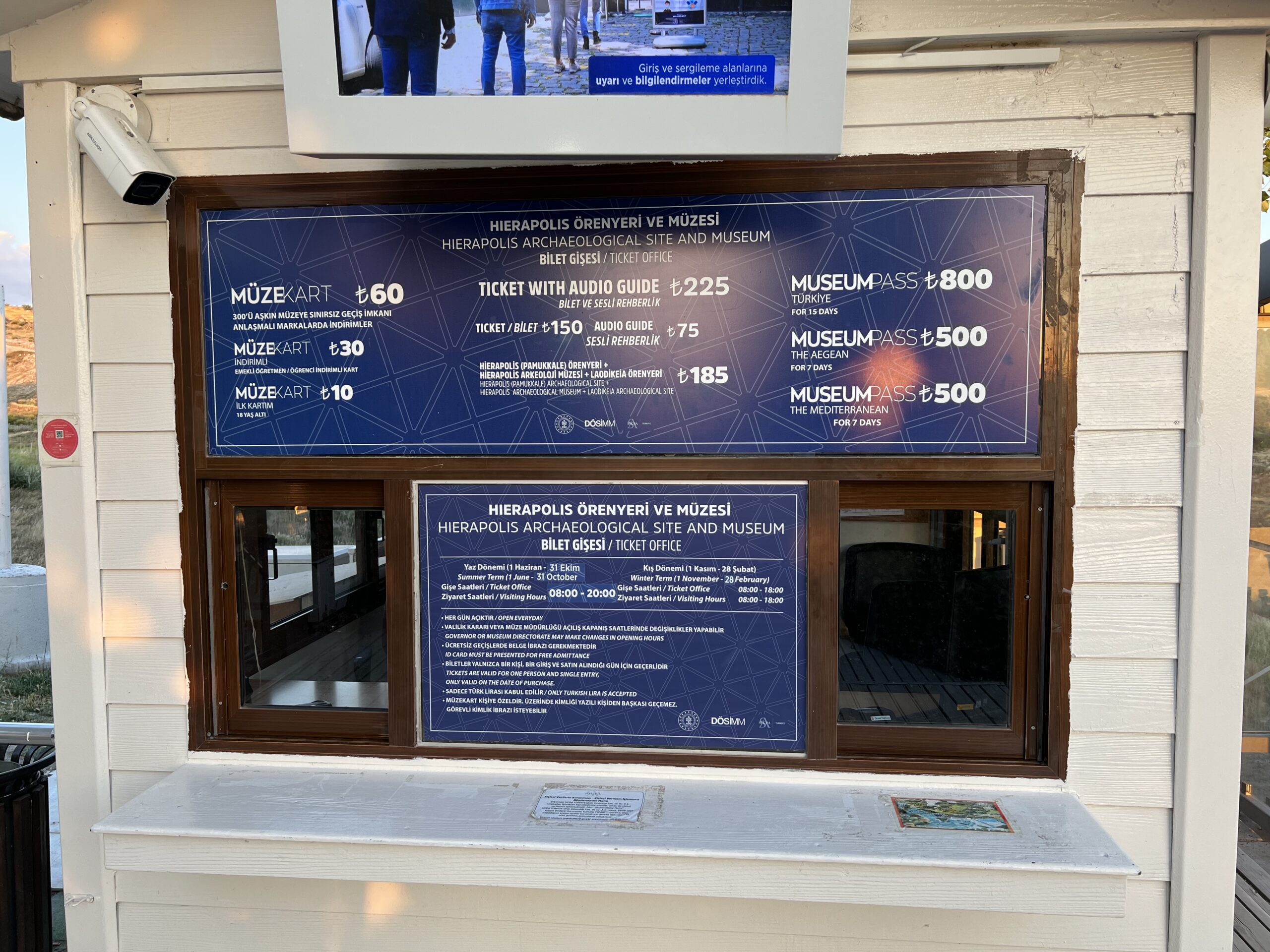
How to get to Pamukkale, Türkiye
You can basically get to Pamukkale by all means of transportation:
- By car. We rented a car with Avis in Antalya and drove for about 3.5 hours straight to Pamukkale.
- By tour bus. There are several tour operators, organizing day tours from the Mediterranean coast (Antalya or Kemer), leaving early in the morning and coming back late in the evening.
- By plane. The closest airport is in Denizli, and there are several nonstop flights from Istanbul and other big cities.
Can you visit Pamukkale with kids?
The short answer is “yes”, but keep in mind it can get really hot in summer, always check the temperature before planning your trip. The thermal pools themselves are ranging from cool (not cold) to warm (not hot) and yes kids can absolutely play, sit in them, swim, and walk over the thermal pools. The girls loved splashing in every single thermal pool that we passed by.

Note, that no shoes are allowed in the thermal pools, so everyone has to be barefoot. While the pools might be a little slippery, the travertine surface is not slippery at all even taking into account that you literally walk over the flowing water.
Sophia obviously hiked all the way up and down, but even little Zoe walked most of the path herself.

How much time do you need to spend in Pamukkale, Türkiye
It took us about one hour to get through the thermal pools to the top of the hill with all the stops and taking pictures, and only 20 minutes to get down.
We did not spend much time in the ancient spa city since we had already planned to visit other ruins on that day. Keep in mind that the Hierapolis territory is quite vast and if you want to explore it, it would take at least another hour.
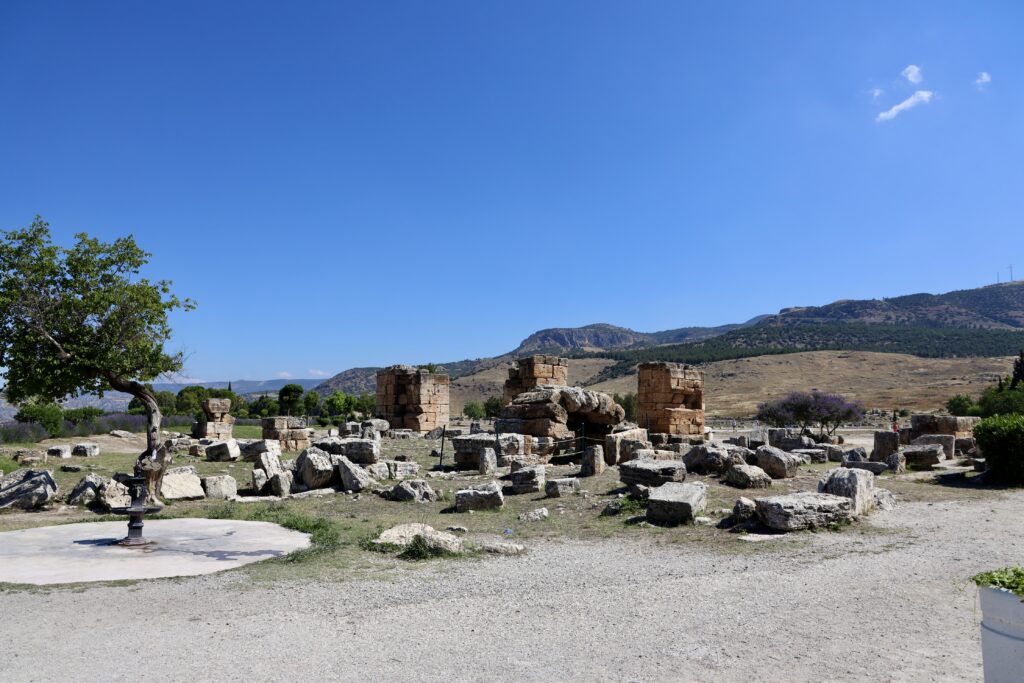
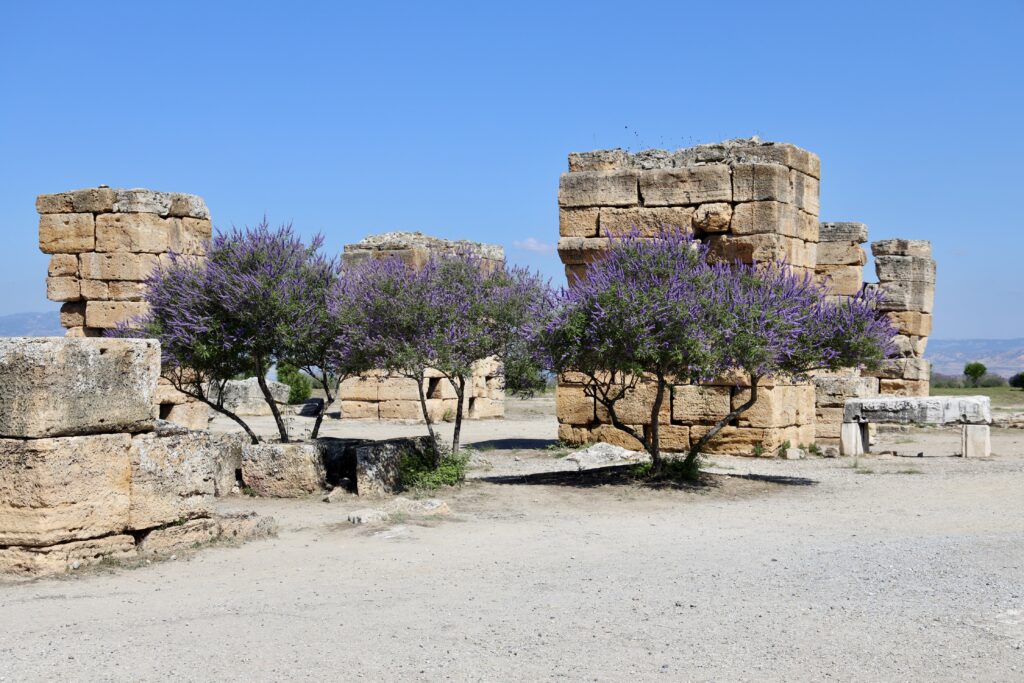
Now, if you want to get some rest or grab a bite – there are cafes and bathrooms right on top of the hill along with Cleopatra’s pool. You need to purchase a separate ticket if you want to swim in Cleopatra’s pool. We decided to skip that attraction as it seemed really overcrowded.
Overall, we think that half of a day is enough to explore the area.
Things to consider while visiting Pamukkale, Türkiye, with kids
- Wear sunglasses. The white travertine on a sunny day is reflecting light, thus making it so bright that it can hurt your eyes.
- Wear swimwear. You would be walking near/over thermal pools and there is a big chance you’ll get wet.
- Protect your head with a hat and wear sunscreen.
- Bring plenty of water.
- Bring a backpack/bag for your shoes. Since you are not allowed to wear your shoes in the thermal pools area, you probably do not want to carry your shoes all the way up and down.

Where to stay in Pamukkale, Türkiye, with kids
We’d like to suggest you stay overnight in the valley, it will give you a huge advantage as it allows you to enjoy the thermal pools without the crowds (and keep in mind that during summer it can get really crowded there 🤷🏻♀️). When staying in the city you start your hike at the bottom, while the tour buses stop at the top of the hill and people go down the thermal pools area.
Plus, you can start as early as the site opening time, while the tour buses arrive later and besides, not everyone even makes their descent all the way to the bottom of the thermal pools.
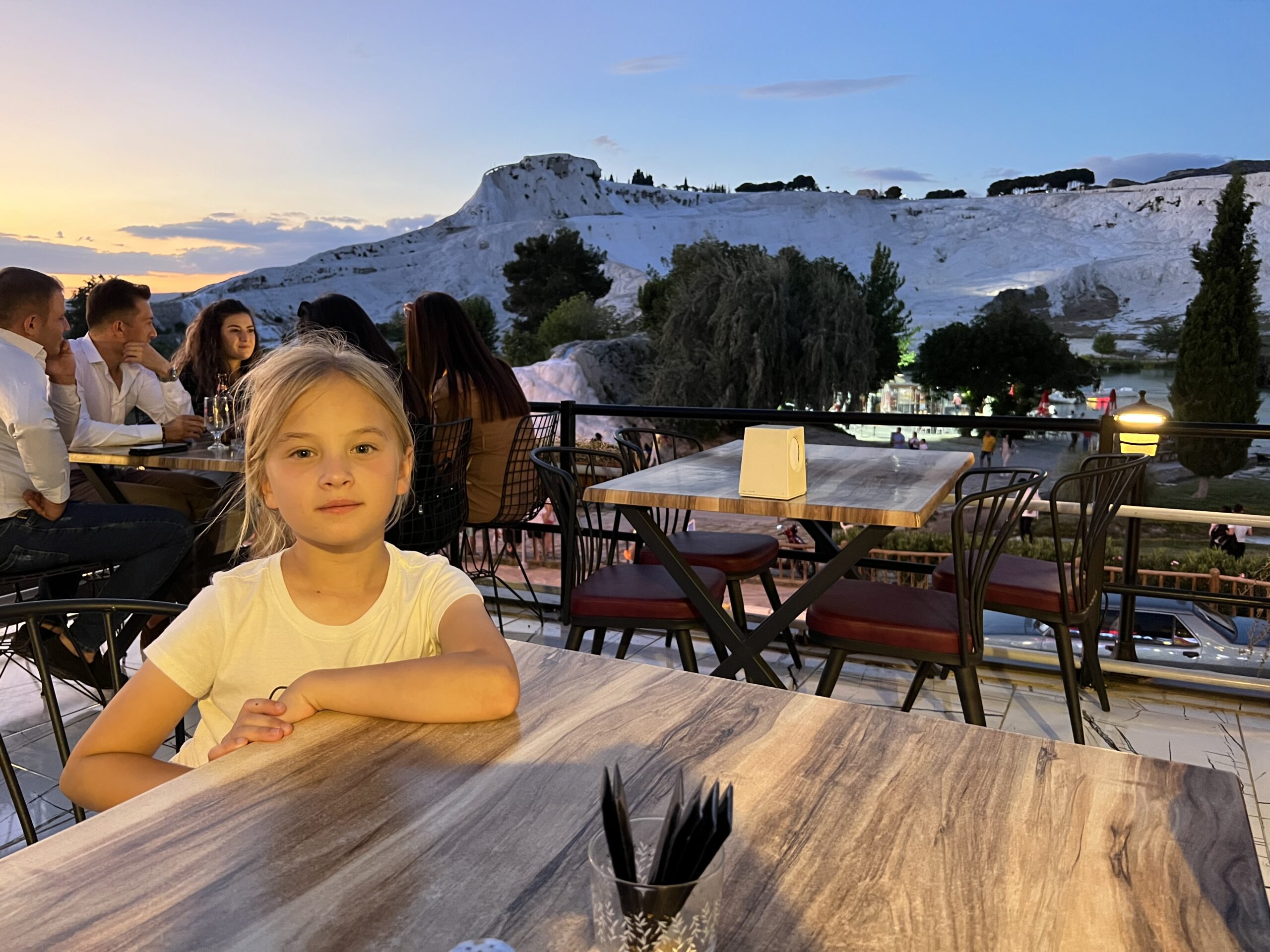
We booked one of the hotels in the valley, Hotel Sahin. It was right next to the city’s main attraction and within walking distance of the restaurants and shops.
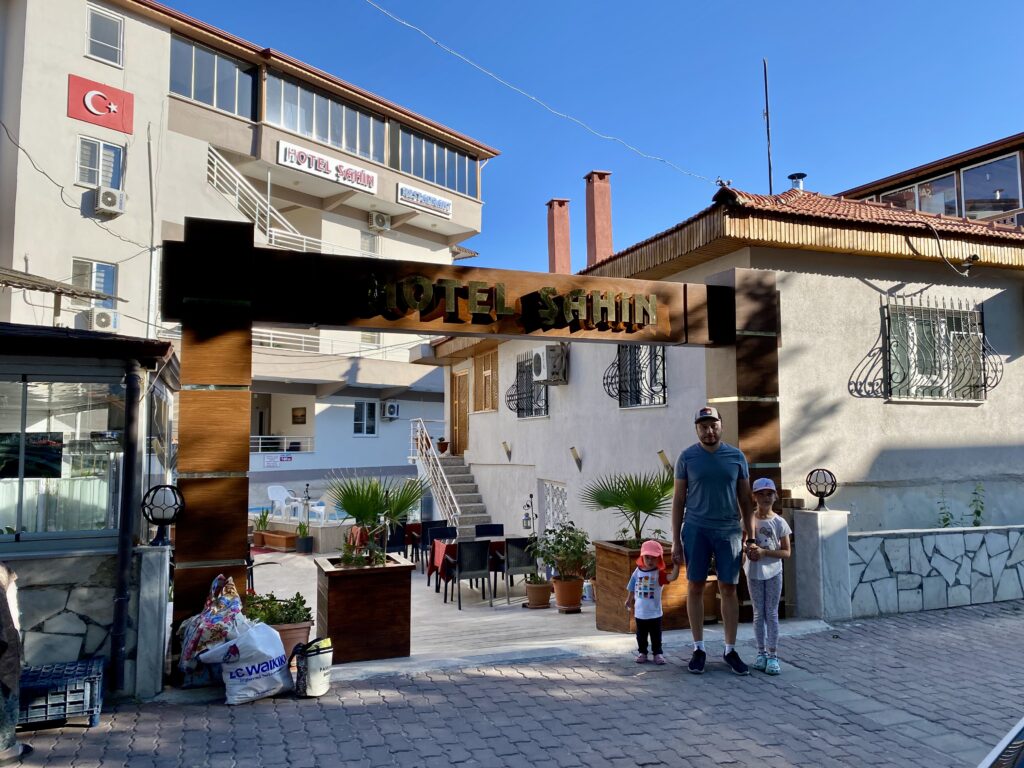
The hotel had a rooftop breakfast restaurant, so you could enjoy your morning coffee with some incredible views.
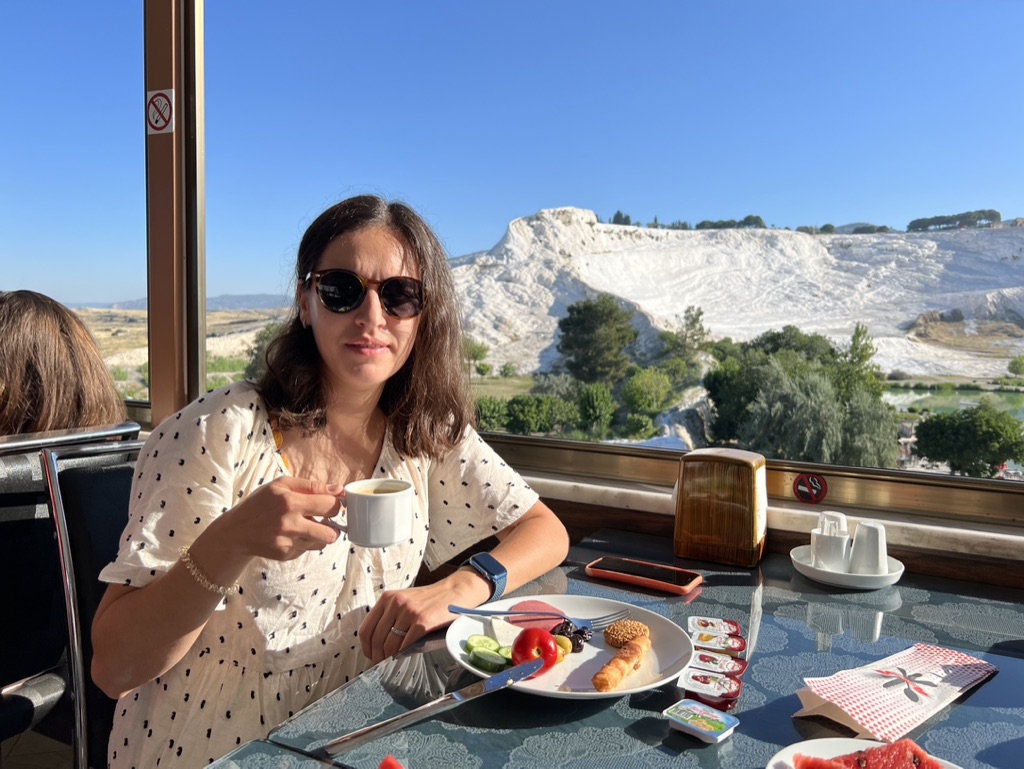
Bottom Line
In our opinion, Pamukkale is 100% worth a visit, especially if you’re traveling through Türkiye with kids. Plan your trip so you can explore this stunning natural wonder at your own pace and avoid the peak crowds.
After walking along the white travertine terraces and discovering the ancient ruins of Hierapolis, you’ll find plenty of local shops and family-friendly restaurants nearby offering a variety of Turkish and international cuisine.
Visiting Pamukkale with kids is not only doable, it’s memorable, and it just might be one of your favorite stops in Türkiye too.



very well written. Thank you very much.
Thank you! 🙂